
- Home
- Brand
- Acanthus (16)
- Amarjewelry (20)
- David Yurman (24)
- Handmade (79)
- Instyle Tiles (78)
- Jayamargems (14)
- Kimaya Jewels & Gems (22)
- Kitchen (16)
- Lukhidiamond (62)
- Modket (17)
- Natural Paving (46)
- Png (13)
- Primethorpe (21)
- Prizma Prints (30)
- Sparkle Gems (30)
- Strata (33)
- Strata Stones (19)
- Universal Paving (17)
- Valam Gems (28)
- Vidaxl (31)
- Other (1620)
- Material
- Gemstone (280)
- Gemstone, Metal (19)
- Gemstone, Stone (17)
- Granite (31)
- Limestone (11)
- Marble (22)
- Metal, Gemstone (16)
- Mica (8)
- Natural Stone (44)
- Particle Board (8)
- Polyresin (12)
- Porcelain (18)
- Pvc (9)
- River Stone (10)
- Sandstone (11)
- Silicone (7)
- Slate (7)
- Stone (336)
- Stone, Sandstone (9)
- Vinyl (22)
- Other (1339)
- Shape
- Stone Type
- Style
- Art Deco (20)
- Band (14)
- Bangle (9)
- Beaded (34)
- Chain (14)
- Classic (11)
- Cocktail (18)
- Contemporary (58)
- Dangle / Drop (10)
- Drop / Dangle (36)
- Modern (145)
- Pendant (109)
- Quartz Worktop (15)
- Smooth (23)
- Solitaire (18)
- Statement (14)
- Stud (15)
- Traditional (62)
- Vintage (9)
- Vintage / Retro (10)
- Other (1592)
- Type
- Basin (26)
- Bracelet (44)
- Earrings (62)
- Floor Tile (10)
- Hearth (10)
- Interior Wall Tile (17)
- Mosaic Tile Sheet (12)
- Natural Stone (302)
- Necklace (89)
- Paver Slab (75)
- Paver Stone (22)
- Pendant (83)
- Ring (141)
- Sharpening Stone (10)
- Sink (8)
- Stove (32)
- Table Lamp (8)
- Wall Panel (10)
- Wallpaper (17)
- Water Feature (30)
- Other (1228)
3'x4'10 Gray Pure Wool Natural Dyes Hand Knotted Stone Wash Peshawar Rug R72083

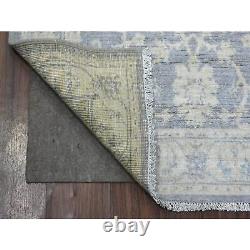
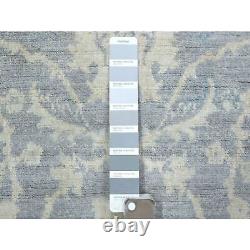
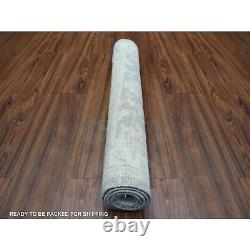
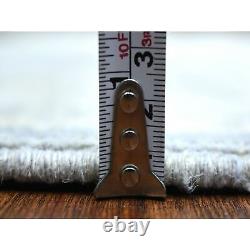
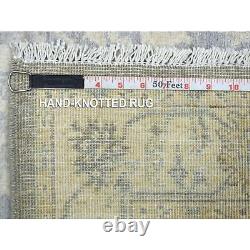


THE YARN AND THE DYING PROCESS. Unprocessed wool arrives at the hand spinning facility in large bales, the wool is then cleaned by hand, to remove sticks and to break up the clumps.
The cleaned wool is spun into the yarns by using a traditional spinning wheel. Whether it's wool, silk or cotton it all starts with the material selection. The big piles of wool are hung onto a large rack and then submerged into the dye. The dye is heated to a near-boiling temperature for a predetermined amount of time. Depending on the weather, the dyed yarn is then set to be dried in the sunlight for one to three days. Pot dyeing and vegetable dyes (natural) are sometimes being used in this process. Before the yarn is dyed, it is first washed. This process happens by submerging the wool into a detergent bath, and then wrung out several times. The yarn is washed again in clean water to remove all remnants of detergent.THE DESIGN AND HOW IT'S MADE. A design is rendered and printed out to on an enormous graph paper, or map called The Naksha. This complete map contains all the minor details of the design that will be applied in making the rug, knot by knot. To start weaving, the loom must be prepared with columns of warps and wefts (sometimes called woofs).
Warps are the threads that run vertically and are intertwined with the threads called wefts which run horizontally. Once the first row or weft is finished and firmly pushed down a second row intertwines to avoid knots from moving.The intense labor is repeated until a durable and precious rug is completed. An experienced weaver can complete up to nine thousand knots per day. Hand-knotted rugs are one of a kind masterpieces created by skillful artisans who possess in their hands the traditions carried down from generation to generation.
The entire rug is put throught the process called binding and trimming, then it is washed and dried several times for vibrancy and sheen. The rug is laid flat on the ground, then fresh water is poured over it. The rug washers then use a wood plank, sharpened on one edge, to force the water through the rug pile. This removes impurities picked up during the creation process.No backing is needed for a hand-knotted rug. The final steps include quality inspection of size, pile height and shearing.
It is important to notice that each weaver or group of weavers adds personality to the new rug, no two rugs are ever the same and all of our handmade rugs are one-of-a-kind. EXPERIENCE THE MAGIC OF A REAL HAND-KNOTTED RUG. WE HAVE PROVIDED TENS OF THOUSANDS OF HOUSEHOLDS WITH THIS LUXURIOUS WORKS OF ART TO A FULL SATISFACTION AND COUNTLESS OF AVID FOLLOWERS AND INTERIOR DESIGNERS. OUR COLLECTIONS ENCOMPASS FINE NEW AND ANTIQUE PERSIAN RUGS, OVERDYED, FLAT WEAVE KILIMS AND DURIES, OUSHAK AND SILK RUGS AS WELL AS EXCLUSIVE MODERN DESIGNS TO NAME A FEW. WE ARE ONE OF THE LARGEST STOCKING DEALERS IN THE WORLD AND SUPPORT SOME OF THE MAJOR ORIENTAL RUG DEALERS IN THE USA.

